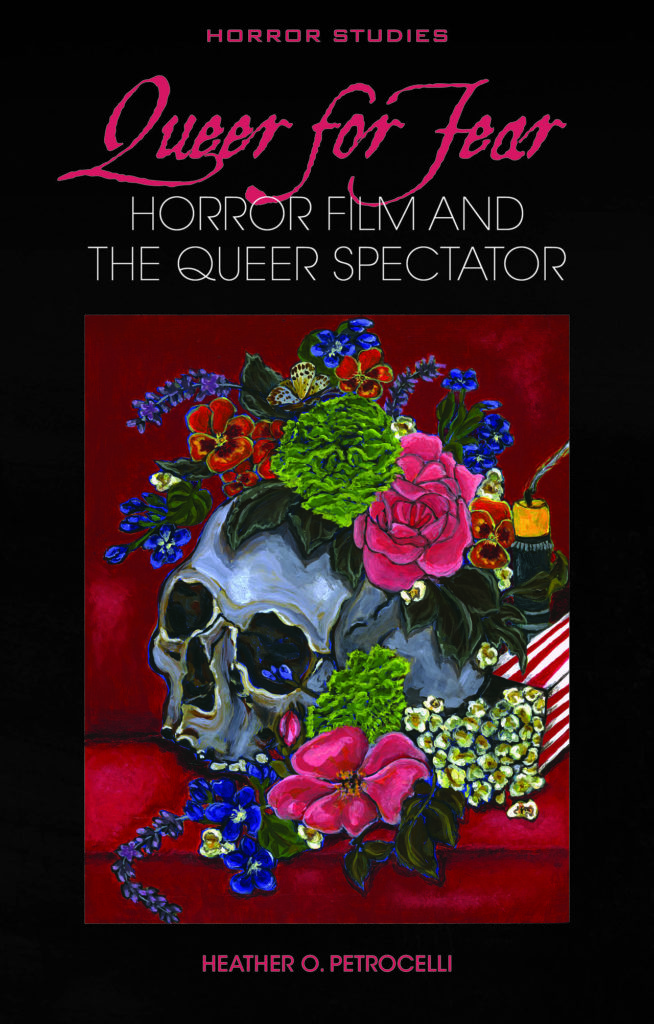Lurking on the Bookshelves: Queer for Fear: Horror Film and the Queer Spectator
As a filmic genre, horror has always contained subtle Queer undertones and themes. Even before explicit representation was accepted, queerness was present in subtextual form. From the work of out gay filmmaker James Whale in the 1930s (including Frankenstein [1931] and The Old Dark House [1932]) and the coded lesbian characters of Dracula's Daughter (1936) and Cat People (1942), through to the pansexuality of Dracula (1958), the internalised homophobia of A Nightmare on Elm Street 2 (1985) and the genderqueer Cenobites of Clive Barker's Hellraiser (1987), horror has always discreetly (and not so discreetly!) featured stories of the marginalised and the outsiders, vilified and rejected by society, 'othered' and rendered monstrous.
Published in September last year, Queer for Fear: Horror Film and the Queer Spectator is a ground-breaking academic study of the relationship Queer people have with horror films. Author Heather O. Petrocelli is an interdisciplinary scholar, working across film studies, queer theory and public history, and conducting research engaging with and rendering visible queer stories and experiences. In Queer for Fear, she delves into and expands upon decades of film theory that focuses on the subtextual Queer readings of horror films, offering up an understanding of how and why LGBTQ+ audiences have a distinctive relationship to horror. According to Petrocelli "Growing up, I was a kid who knew they were queer and loved horror films, both facts I often hid from others to feel safer or not so out of place. This changed in my 20s when I sat in a movie theatre and had the revelatory experience of watching horror films with a mostly queer audience. From that moment on, I knew that I wasn’t alone and suspected the queer connection to the horror genre was distinctive. This perspective fuelled my pursuit of doctoral studies and informed my thesis work to determine how and why queers have a distinctive relationship to horror."
Published in September last year, Queer for Fear: Horror Film and the Queer Spectator is a ground-breaking academic study of the relationship Queer people have with horror films. Author Heather O. Petrocelli is an interdisciplinary scholar, working across film studies, queer theory and public history, and conducting research engaging with and rendering visible queer stories and experiences. In Queer for Fear, she delves into and expands upon decades of film theory that focuses on the subtextual Queer readings of horror films, offering up an understanding of how and why LGBTQ+ audiences have a distinctive relationship to horror. According to Petrocelli "Growing up, I was a kid who knew they were queer and loved horror films, both facts I often hid from others to feel safer or not so out of place. This changed in my 20s when I sat in a movie theatre and had the revelatory experience of watching horror films with a mostly queer audience. From that moment on, I knew that I wasn’t alone and suspected the queer connection to the horror genre was distinctive. This perspective fuelled my pursuit of doctoral studies and informed my thesis work to determine how and why queers have a distinctive relationship to horror."
Petrocelli's painstaking research included gleaning data from over 4,100 survey participants’ responses and 15 in-depth oral histories to explore the opinions, viewing habits and tastes of LGBTQ+ audiences. She explains "I analyse the relationship queer people have to horror with a qualitative and quantitative study, building on decades of theory that had emphasised horror’s queerness as being subtextual, allegorical and figurative. This ground-breaking study of the queer spectator of horror film expands theoretical discourse with empirical data to evidence that queer embodiment has ontological and phenomenological connections to the horror genre."
Petrocelli's data concludes that horror is queer to the queer spectator. Queer for Fear further establishes that a significant percentage of queer spectators actively and therapeutically engage with horror to work through their queer trauma, and that they knowingly have a camp relationship to horror. The book also demonstrates the importance of the queered presentation of horror films to queer audiences with live cinema screenings that feature live drag performance, examined through case studies of Peaches Christ’s Midnight Mass and Carla Rossi’s Queer Horror.
Queer for Fear is an overdue contribution to the fields of queer, film, horror, trauma, camp and live cinema studies.
You can find more info on Queer for Fear, and pick up a copy, here.



